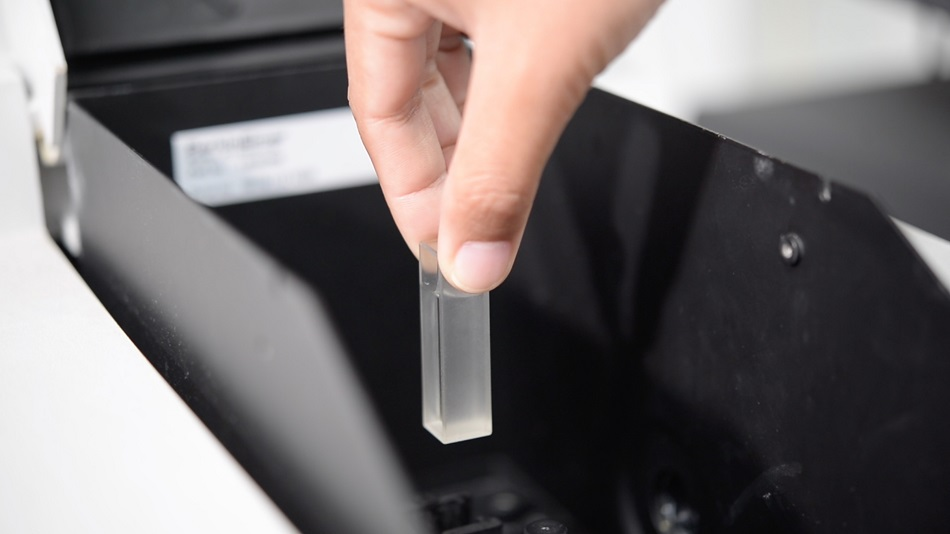
Image Credit: Rabbitmindphoto/Shutterstock.com
At quantum scales of size (and time), the universe behaves in non-intuitive, unpredictable ways. The laws of classical mechanics no longer apply, and the peculiar quirks of quantum mechanics become the new norm.
Quantum tunneling happens when particles can pass through matter as if disappearing through a wall. Quantum entanglement links two particles together across space with no invisible thread present. Quantum superposition – understood in popular culture as Schroedinger’s famous cat – is when one particle is in multiple mutually exclusive states at once.
We know much more about the behavior, structure, and features of matter at scales of 100 nm or less (one-ten thousandth of a millimeter or smaller) following the theoretical and experimental findings of quantum physics in the last century and a half. This is thanks in large part to the development of modern spectroscopy. Spectroscopy has also developed in tandem with and relied on our understanding of matter at these minuscule scales.
A Quantum History of Spectroscopy
The field of spectroscopy (which is concerned with the interplay between matter and electromagnetic radiation) has always relied on quantum physics, even before the peculiar mechanics noted above were discovered.
Scientists in the late nineteenth century collected huge amounts of atomic spectral data (the colors that each material absorbed when colored light was shone on it). They noticed that some of the more regular materials produced similar spectra.
Molecular bonds – the structure of nuclei, electrons, and atoms within a molecule – resonate at a different frequency in each different molecule. Therefore the spectra information – the different frequencies or wavelengths of light that were absorbed in different materials – contains a unique fingerprint for every type of molecule in the universe.
Physics at the time developed two observations about this data: frequencies in spectral lines can be expressed as the difference between two quantities; and that one universal constant determine these frequencies. In 1913, physicist Niels Bohr built on earlier physicists’ observations collecting information about matter with his quantum theory of atomic hydrogen – central to the development of spectroscopy as well as our understanding of the structure of atoms at quantum scales.
Bohr proposed that electrons are bound to a positively charged nucleus, moving in circular orbits, in every atom. This atomic model showed that a spectral line’s frequency was interpretable as the difference between energy levels. Bohr’s presentation of atomic structure was the basis for modern quantum theory, with Erwin Schrödinger and Ernest Rutherford relying on his inference to elucidate atomic and molecular structure in detail in the early twentieth century.
These discoveries and others have been essential for the development of spectroscopy in the last century and today. Pieter Zeeman split atomic spectral lines in 1896 by applying a magnifying field, while Hendrik Lorentz explained Zeeman’s experiment using classical theory one year later. Johannes Stark’s corresponding discovery in 1913, that an electric field applied to hydrogen’s spectral lines could split them in the same way, explains how a spectrometer can read the information it gathers and present it.
Using Spectroscopy for Exploring Matter
As mentioned, spectroscopy is by nature a technique based on quantum mechanics, and its development relied on advances in quantum physics from the late nineteenth century onwards. Spectroscopy has also been used to help us understand matter in the quantum scales.
Spectroscopy was used to observe alternating intensities of successive rotational-vibrational lines in nitrogen’s infrared spectrum. In 1931, Paul Ehrenfest and J. Robert Oppenheimer concluded from this observation that nuclei with even spin obey Bose-Einstein statistics.
Modern Spectroscopy for New Frontiers
The interplay between spectroscopy, quantum physics and the exploration of matter in the universe has continued throughout the twentieth century and today. As the gas lamps used in the nineteenth century were replaced with lasers, and as computer technology became available, it became possible to measure frequency with far more accurately than distance.
This enabled the redefinition of the meter in 1983, and the assignation of a fixed value to the speed of light, as well as modern spectroscopy which measures frequency and converts values to length using the speed of light. Quantum spectroscopy has opened new frontiers – and even new ways of understanding – in our exploration of matter.
Sources and Further Reading
Disclaimer: The views expressed here are those of the author expressed in their private capacity and do not necessarily represent the views of AZoM.com Limited T/A AZoNetwork the owner and operator of this website. This disclaimer forms part of the Terms and conditions of use of this website.